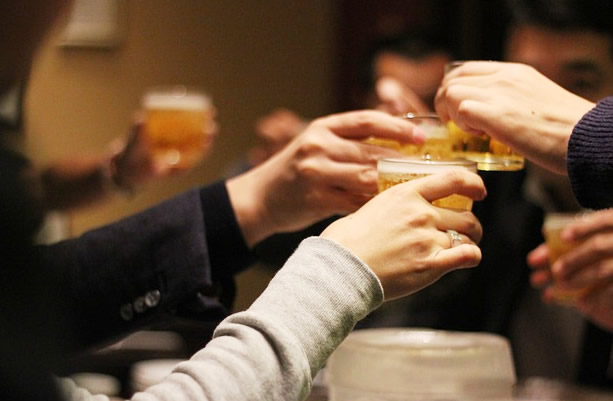先日から「The drinking culture hidden inside Japan’s liquor stores -「日本の酒屋に隠れた飲酒文化」を読んでいます。

・「日本の酒屋に隠れた飲酒文化」(1)
・「日本の酒屋に隠れた飲酒文化」(2)
・「日本の酒屋に隠れた飲酒文化」(3)
・「日本の酒屋に隠れた飲酒文化」(4)
・「日本の酒屋に隠れた飲酒文化」(5)
・「日本の酒屋に隠れた飲酒文化」(6)
Like Uozumi, almost 80% of Kitakyushu’s liquor shops don’t have successors, according to a 2015 study by Yuki Nakashima and Bart Dewancker of the University of Kitakyushu’s Architecture Department.
魚住さんと同様、北九州の酒屋の8割近くは後継者がいないことが、北九州市立大学建築学科の中島氏とバート・デワンカー氏の2015年の調査で判明している。
While the number of liquor shops kept growing until the 1970s,
1970年代までは酒販店の数は増え続けていたが、
since then, the downward trend has been relentless, due to proprietors ageing and not being able to pass on their businesses, as well as competition from other types of retailers selling alcohol, such as supermarkets and convenience stores.
その後は経営者の高齢化や事業継承の難しさ、スーパーやコンビニなど他の酒販店との競合などにより、減少の一途を辿っている。
Yoshida estimated that 80 years ago there were double the kaku-uchi there are now.
吉田氏は、80年前には今の2倍の角打ちがあったと推定している。
After leaving Uozumi and saying goodbye to Yoshida and the other group members, I met Stephen Lyman, co-author of the book The Complete Guide to Japanese Drinks, in Fukuoka, a 15-minute bullet train ride from Kitakyushu.
魚住酒店を離れ、吉田氏や他のメンバーと別れた後、北九州から新幹線で15分の福岡で、「日本の飲み物完全ガイド」の共著者であるスティーブン・ライマンに会った。
Fukuoka is another kaku-uchi hotspot,
福岡も角打ちの盛んな地域で、
and Lyman and I chatted about his favourite joints, such as Koba Saketen, a shop specialising in sake and wine that he praised for its friendly atmosphere and good drink selection.
ライマンと彼のお気に入りの店について話をし、日本酒とワインの専門店「こば酒店」などは、フレンドリーな雰囲気で良い酒が揃っていると絶賛した。
前に読んだ銭湯の絵師の方の方もそうでしたが、後継者問題と言うのは、特に先細りの業種ではどうしても付いて回るものですよね。
文化だから失くしたくないという気持ちもあれど、現実問題、生活が出来なければ、若い人に継いでほしいとも言えない。
このジレンマを抱えている業種は、角打ちだけではないだろうなと思います。
理由は単純明快!「少ないコストでしっかり楽しく学べるから」。
私自身の経験(高機能でビックリ)をびっしり書いていますので、良かったら読んでみてください。
下のバナーからどうぞ!






